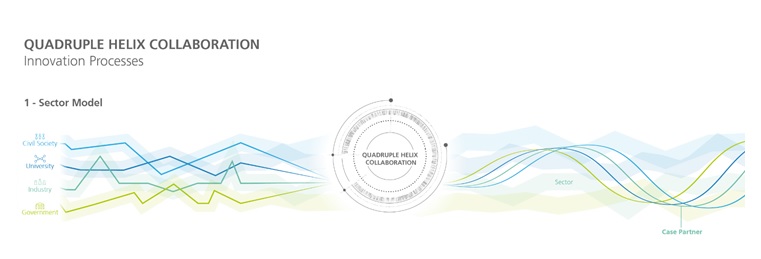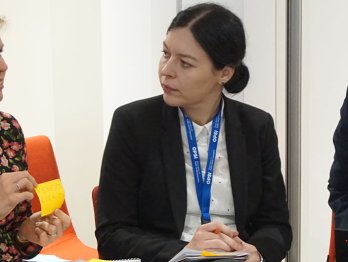Do we need a reorientation for the innovation imaginary?

This is a guest post from Robert Braun, Johannes Starkbaum and Anna Gerhardus of the Institute for Advanced Studies, Vienna, Austria, and the RiConfigure EU research project (Grant agreement No.: 788047).
Public sector innovation is widely seen as a key for ‘doing things better’. However, innovation per se will not necessarily lead to ‘the better’ nor define what ‘the better’ actually is. Just as the novel OECD Declaration on Public Sector Innovation suggests , we believe that new partnerships and the involvement of new voices are necessary in order to actually do better, as they bring voices from civil society into innovation. A past story on Coke innovation shows why this is important.
One of the most well-known cases of business innovation failure was the introduction of a new taste in Coca-Cola in 1985. The business case was simple: the Coca-Cola Company’s share lead over its main competitor, in its main market, with its main product, had been slowly decreasing for 15 consecutive years. Innovation and renewal was seen as key at the company, so the secret formula of the Coca-Cola was changed, adopting a formula preferred in taste tests of several hundred thousand of consumers. What these tests did not actually show, as they focused the taste-experience solely, was the connection consumers felt with the original brand and product. By June 1985, The Coca-Cola Company was getting 1,500 calls a day on its consumer hotline. When the taste change was announced, some consumers panicked and filled up their basements with Coke. Suddenly everyone was talking about Coca-Cola, and not in a good way, realizing what an important role it played in his or her life. Funny as it seems looking back, had Coca-Cola known the concept of Quadruple Helix Innovation things may have played out differently.
Quadruple Helix Innovation claims to involve civil society, or the public at large, into the innovation process. The aim is to open up the linear thinking of innovators and also bring aspects of social embeddedness to the fore. Quadruple Helix Innovation models complement the three ’traditional’ Helices of innovation actors, industry, research and public policy, with those of civil society or cultural actors representing societal stakes in the innovation process. While the Coke example may not be a traditional case of Triple Helix Innovation it points to the need of opening up traditional top-down, marketing and business focused innovation constellations even understanding such mundane innovation as bringing a new Coke to the market.
The RiConfigure project investigates versatile research ecosystems and aims at experimenting with new research and innovation constellations. These innovation setups assist changing traditional knowledge hierarchies, institutional collaborational practices and modes of governance, as well as fostering the inclusion of civil society to better embed innovation in society. Quadruple Helix Innovations create innovation through interactive processes in which different groups of actors contribute with their knowledge due to their function in society. Such collaborations formalise the role of civil society and this creates a more transparent innovation process based on the principles of responsible research and innovation. In addition they could be more adapted to the needs of the twenty-first century, as knowledge is increasingly created in cross-sectoral collaborations and is not limited to one field of knowledge. More perspectives are therefore needed to understand the present unfolding innovation process through a different lens. Innovation processes thereby become more open through the belief that different stakeholders in society jointly and actively are part of creating new ways of innovating.

We look at four different cases across Europe: an open innovation platform being built by the publicly owned Austrian railways complementing their Open Innovation Lab; a local civil association initiated research hub of multiple actors in Roskilde, Denmark; an industry focused sustainable water and energy project experiment inviting actors from all the four Helices in the Netherlands; and a research institute lead project that aims at changing traditional hierarchies in Germany. All of them struggle with challenges of governance and, mainly, how these new set of actors may work together and whether civil society (or the public at large through some form of organizational structure) can become a meaningful cooperative actor in innovation endeavors.
Our first wave of empirical research shows that aligning the interests of stakeholders that represent social needs requires a change in the end-goal of the innovation collaboration, also in public sector innovation. While we currently observe an economic drive of innovation across various examples, we claim that the ‘mission’ should be as much social as it is business. We may call this a reorientation of the innovation imaginary. Instead of focusing on new products and services as market drivers, we may realign our innovation thinking to address social needs. This may be a game changer: innovation is a driver of our societies, as much as it is a driver of a neo-liberal understanding of society. Marketisation of everything is the mantra of critics of such societies.
Innovating with, by and for the people through Quadruple Helix Innovation may bring the much-needed change in our thinking to address the main challenges of the day, no matter if we speak of a large corporation or a government as the main driver. Whether such an innovation constellation would also work for Coke is yet to be seen. It definitely helps to align public sector innovation with the needs of citizens – the ones that public sector innovation is all about.












